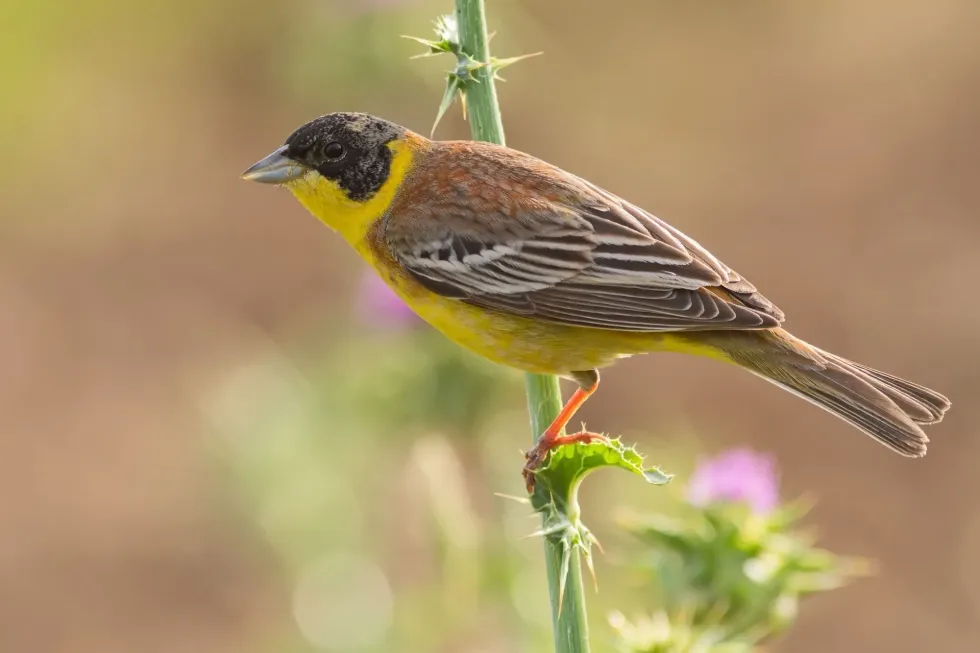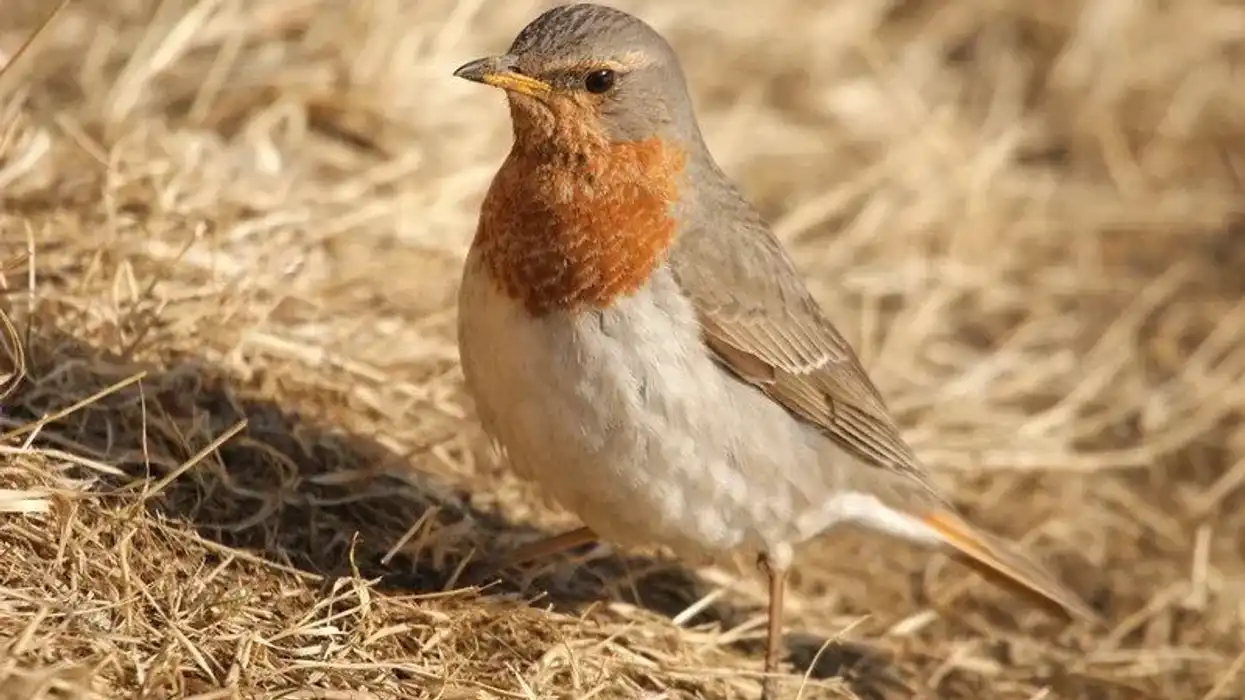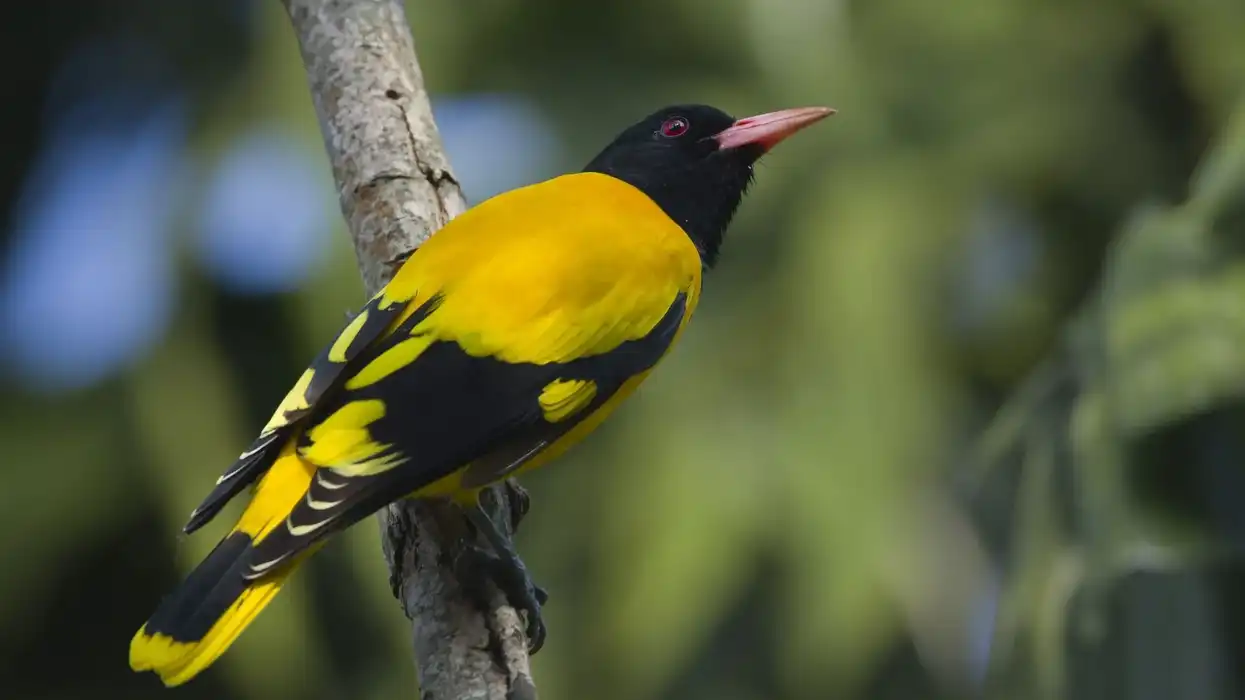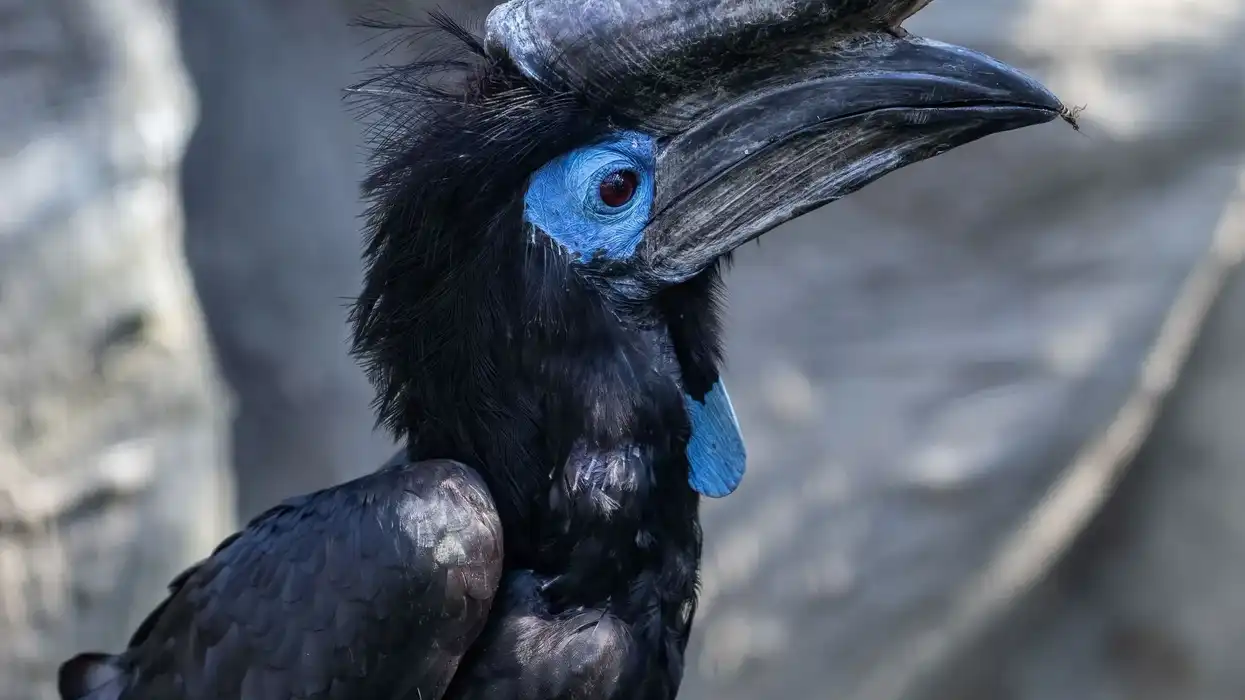Buntings are a group of Old World passerine birds that belong to the family- Emberizidae and form the genus Emberiza. This article is about a special bird belonging to this family and it will tell you everything you need to know about them including their winter migration pattern, distribution, habitat, physical description, feeding, breeding, and nesting habits!
The black-headed bunting is a passerine bird belonging to the Emberizidae family, previously placed in the finches group-Fringillidae, this species is monotypic, and does not have any recognized subspecies.
They were first described and introduced as Emberiza melanocephala by Giovanni Antonio Scopoli, an Austrian naturalist in 1769. The word melanocephala is derived from two Ancient Greek words- 'melas' meaning black, and 'kephale' meaning head.
The black-headed bunting birds are closely related to the red-headed bunting birds and often engage in interspecific hybridization (mating outside one's group or species) as their breeding range overlaps in northern Iran.
The adults have a gray-brown back and a grayish head, with bright yellow underparts.
The adult breeding plumage is bright than the non-breeding plumage and has a chestnut back.
Like many other species the black-headed bunting breeds in open grassland habitats, fields, trees, and regions with plenty of natural vegetation, their breeding zone extends from southeast Europe east to Iran and migrates in winter mainly to India, with some individuals moving further into south-east Asia.
They fly and travel in a medium to a large group or in flocks in search of grains and seeds.
Read on to find a detailed description of their appearance, the physical characteristics of a black-headed bunting, the number of eggs laid in a single clutch, characteristics of their nest, and more!
Learn about some other birds from our cockatoo facts and red-backed shrike facts pages.
Black-Headed Bunting Interesting Facts
What type of animal is a black-headed bunting?
The black-headed bunting (Emberiza melanocephala) is a bird belonging to the Animalia kingdom. They get their name from the black head of the bright yellow males.
What class of animal does a black-headed bunting belong to?
The black-headed bunting (Emberiza melanocephala) belongs to the Aves class, the family Emberizidae, and is the genus of Emberiza.
How many black-headed buntings are there in the world?
The accurate data about their population size is unknown. However, these birds are considered a common species across their range and distribution.
Where does a black-headed bunting live?
The black-headed bunting range occupies Asian countries like India, and Iran and is a rare visitor to regions of Western Europe in the summer. The wintering grounds are mainly in India.
What is a black-headed bunting's habitat?
The black-headed bunting breeds in open grassland habitats, scrubby areas including agricultural fields, meadows, grasslands, regions with plenty of natural vegetation, and temperate climatic conditions.
Who do black-headed buntings live with?
The black-headed bunting is found in flocks. The species search for food like seeds, and grains together and often look out for each other.
How long does a black-headed bunting live?
The black-headed bunting (Emberiza melanocephala) lives up to seven or eight years in the wild.
How do they reproduce?
The black-headed bunting breeds in summer, and are seasonally monogamous. The main breeding zone extends from south-eastern Europe to central Asia.
The wintering grounds are mainly in India although vagrants have been found wintering as far as Japan, Laos, China, South Korea, and Malaysia. Some vagrants may occur as far north in Europe as Norway.
The breeding male birds arrive at the breeding grounds before the females and begin selecting their nesting territories. After the females arrive they choose their partners based on whose song they liked best.
After pairing up they build their nest in a low bush or on the ground. Their nest is poorly made and often attacked or destroyed by wild animals like mongoose, minks, and weasels who later feed on their eggs.
The nest is cup-shaped and made of drying cotton thistle stems, twigs, dry grass, and lined with other finer materials. About four to six eggs are laid in a single clutch, these eggs are white and covered with tiny brown spots.
The eggs are incubated for several days before they finally hatch. The young chicks fledge 10 days after hatching.
What is their conservation status?
The IUCN Red List of Threatened Species has classified the black-headed bunting bird as species of Least Concern.
Black-Headed Bunting Fun Facts
What do black-headed buntings look like?
The breeding male bird has bright yellow underparts, a dark brown rump, chestnut back, and a black hood. The black-headed bunting female has the same but paler and faded plumage, a gray-brown back, and a grayish head, it is the worn-out or washed-out version of the male.
Juveniles are virtually identical to adults.
Since most of their diet is made up of grains and seeds their bills are stubby and conical shaped.
To separate a black-headed bunting from the closely related red-headed bunting you must pay close attention to the coloration, as males have a prominent wash of color on their cheeks, a gray crown, and dark brown patches.
Female black-heading buntings can be difficult to separate from female red-headed bunting birds, but they have more streaking on the crown than on the lower back and a black hood.
How cute are they?
They look really look because of their small size, and their black head that contrasts their brightly colored plumage.
How do they communicate?
The black-headed bunting is a passerine bird and is known for its song. In winter their call is a single note - 'tweet'.
How big is a black-headed bunting?
A black-headed bunting grows up to 4.7-5.1 in (12–13 cm) in size. A peacock is nearly 10 times bigger than a black-headed bunting!
How fast can a black-headed bunting fly?
The speed of the species is unknown but they most likely are great flyers as they often migrate.
How much does a black-headed bunting weigh?
An adult black-headed bunting male weighs around 0.9 oz (18 g), and a female weighs 0.4 oz (12g).
What are the male and female names of the species?
They do not have individual names for their male and female birds, the birds of this species are simply denoted as males and females.
What would you call a baby black-headed bunting?
A baby black-headed bunting is called a chick. The chicks have a high mortality rate as their nest is built poorly near a bush and often destroyed by predators or by natural causes.
What do they eat?
They search for food on the ground, near a bush, and areas near their nest. The adult black-headed bunting diet includes a variety of small insects and invertebrates like water beetles, bugs, spiders, worms, seeds, and grains.
Snakes and birds of prey often hunt and feed on this species.
Are they poisonous?
No, they are not poisonous or harmful to humans.
Would they make a good pet?
These birds have not been domesticated yet, because they are wild, migratory, and are territorial. Therefore, these birds would not make good pets.
Did you know...
You can attract this stunning bird to your yard, by installing a feeder within your perch and offering them millet seeds!
Do black-headed buntings migrate?
Yes, they do, and they have a unique migration pattern. Males fly in flocks and can travel several miles in a span of seven days, they migrate before the winter season begins.
Their winter migration range occurs mainly in western and northern India extending north to southern Karnataka. They are often joined by other species such as the yellow-throated sparrow. The breeding male birds in the southeast and western Europe east migrate to Iran.
Are black-headed buntings endangered?
No, they are not endangered as of now their population size is stable.
Here at Kidadl, we have carefully created lots of interesting family-friendly animal facts for everyone to discover! Learn more about some other birds from our palm warbler facts and American pipit facts pages.
You can even occupy yourself at home by coloring in our free printable black-headed bunting coloring pages.










